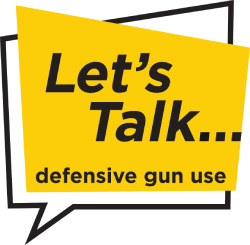Tactical Firearms Training, now, there’s a subject that could cause a fight in an empty room.
Tactics are subjective, and tactics depend upon blah de blah blah. I’ve heard it all, and I’m sure some of you guys have too.
Basic Defensive Tactic Fundamentals
But, as much as I agree with the statement that “Tactics depend upon blah de blah,” some basic fundamentals of tactics should never be screwed with in any way, shape, or form.
Get Away From the Line of Fire (move). Get off the X!
These are probably the two most disregarded or poorly applied aspects of tactical firearms training, and ironically, they are probably the two things that will help you survive a gunfight or armed criminal encounter.
And yet, within the firearms training industry, speed and accuracy seem to get everyone’s attention and get the most “likes” on TikTok. It’s that Tacticool mindset.
Speed And Accuracy Are Important, But
Before there is a collective explosion of heads, let me clarify: I agree that speed and accuracy are important. It’s just that I don’t think they are the two MOST important skills to have in a contact or gunfight.
Neither should cancel out the simple fact that getting out of the line of fire and taking cover behind something will ultimately save you quicker than standing still and giving your potential killer a higher percentage of success.
However, I acknowledge that standing your ground and engaging from where you already might be is the best choice in a confined space or zero-distance engagement. Particularly with multiple threats, because as you try to move or create distance, it might cause more problems than it solves.
Competition Shooting vs. Tactical Shooting
In addition, if you’re a competition shooter, where tactics play no part in the competition, then yeah, speed and accuracy are all that matter. Still, competition shooting styles, applied in a tactical environment where people shoot back, don’t work.
Applying tactics is HARD, but they’re supposed to be hard. They are hard for a reason.
The chances are that everyone who has gone through basic training in the military will have had tactics constantly drummed into them, particularly in using cover.
Using Cover Correctly Isn’t Easy – It’s a Ball-Breaker
From personal experience, using cover correctly is a ball-breaker. It is an ass-kicker. It is not a place to sit back and rest, nor is it a place from which to rest your weapon system. Using cover “correctly” (regardless of what kind of cover it is) requires constant movement from behind that cover; it’s the ball-breaker.
Bullets generally go in straight lines, yes? So why do so many people stand still? Why do so many people walk forward in a straight line? Or worse still, walk backward in a straight line? Either option keeps you in that line of fire.
Static Firearms Training
Personally, I do very little static training or static shooting because I don’t feel that it helps me achieve what I want, which is to stay alive.
Don’t get me wrong, I still group, and I still practice my draw, but I do it from a platform that more realistically reflects
- the situations I’ve been in and
- what I’m likely to be facing in the future.
Some people seem to have stuffed tactical firearms training in the closet under the stairs. I wonder if the reason is that it’s just easier to “train” without adherence to any tactical procedures to create a false positive of achievement.
Sound harsh? Yeah, I know it does, but when you apply realism to firearms training, the tactics required to survive whatever it is you’re training for start to become pretty clear.
Tactical Firearms Training Will Show Your Weaknesses
Injecting tactics into firearms training is a leveler. It humbles the person and acts as a magnifying glass into the soul of what you’re actually training for, and, more depressingly, it highlights the flaws in our firearms training, which results in the horrendous realization that we’re not as good as we thought we were.
When called upon to use that training, I cannot think of anything worse than finding out that we’re not as “trained” as we thought.
Applying a tactical framework to your training forces you out of your comfort zone. It forces you to confront that crappy realization that what and how you’re training might not work when faced with a real-life encounter.
Too many people claim to understand the importance of tactics without applying them.
Gunfights and armed criminal encounters are messy, and, at some point, your training has to reflect that messiness. Applying tactics that reflect WHAT you’re training for helps identify WHY you’re doing what you’re doing.
Response options have GOT to work for you. Applying tactics when you train will show if it does or doesn’t. Training with no adherence to tactics sets you up for failure, and we should never train to achieve failure.
Have you thought about how you train? Do you train with a purpose?


